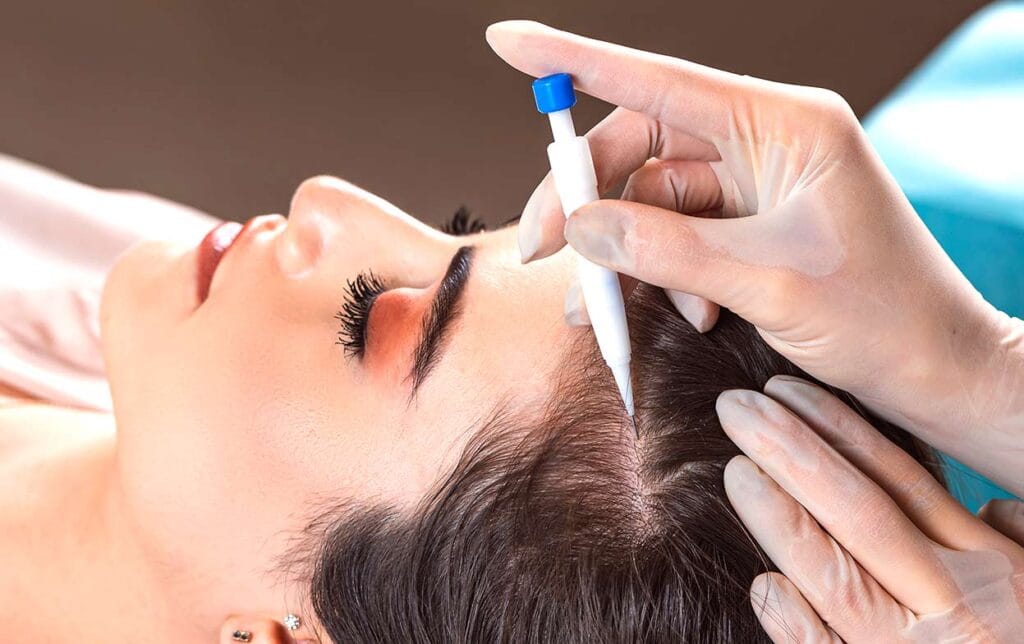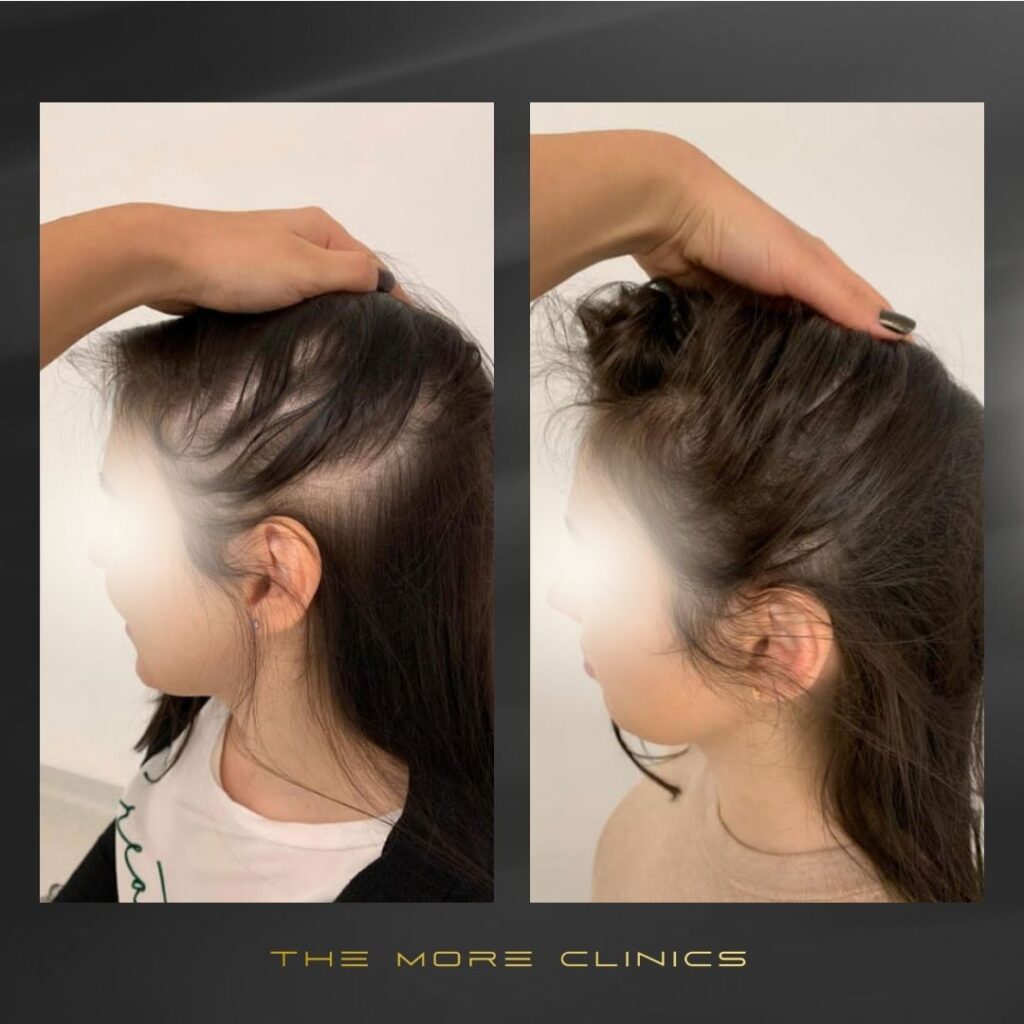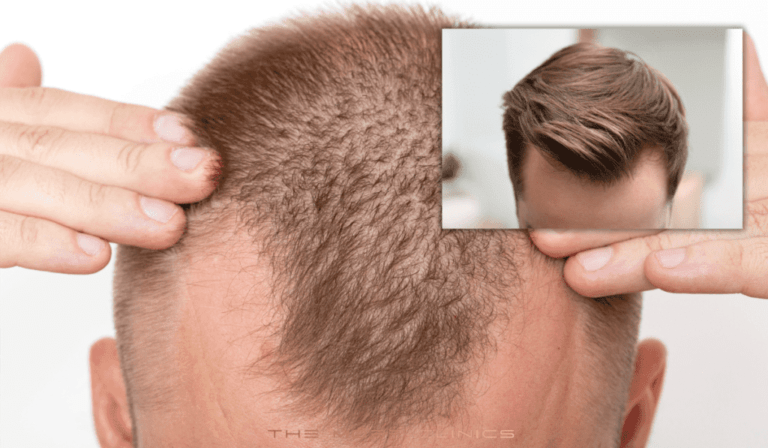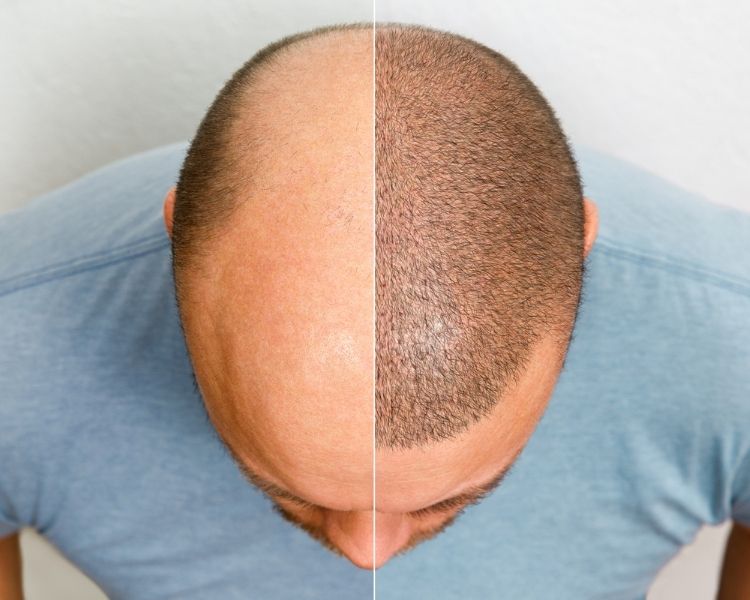Hair Transplant for Women
Whether due to genetics, medication side effects, illness, or age – female hair loss can be devastating psychologically as well as physically; but do not worry! There is help available in the form of a modernized approach to recuperating fullness and beauty: hair transplant for women. In this blog post, we will discuss the many benefits of undergoing a successful woman hair transplant treatment!

Understanding Hair Loss in Women
Hair loss can be a distressing experience for anyone, but for women, it can be particularly challenging. The causes of hair loss in women are varied, and understanding the different types is the first step in finding the right treatment.
One common type is androgenetic alopecia (also known female pattern baldness), which is inherited and leads to thinning of hair on the top and crown of the head.
Another type is telogen effluvium, which usually occurs after a significant emotional or physical stressor and results in a diffuse thinning of hair all over the scalp.
Alopecia areata, an autoimmune disorder that causes patchy hair loss, is also seen in women. There is also post partum hair loss. It’s important to consult a physician or dermatologist if you experience hair loss for proper diagnosis and treatment.
Techniques of Hair Transplant for Women
Hair loss is a sensitive topic for women, and it can affect self-esteem and overall well-being. However, hair transplantation techniques have become a viable option for those seeking to address hair loss. It involves the transfer of hair follicles from a donor site to the recipient site, and there are various techniques used in this procedure.
Follicular Unit Extraction (FUE) for Women
For women dealing with hair loss, there are various options available, but one that stands out is the follicular unit extraction (FUE) method. FUE involves the removal of individual hair follicles from a donor area and transplanting them into the balding or thinning area. The procedure is minimally invasive, giving women a chance to restore their natural-looking hair without any scars or incisions.
Direct Hair Implantation (DHI) for Women
DHI is a technique that involves transplanting hair follicles directly to the scalp, which results in a quicker recovery period and a more natural outcome. Unlike traditional hair transplants, DHI hair transplant Turkey does not require the removal of a strip of scalp, and it allows for meticulous placement of each hair follicle, creating undetectable results. This revolutionary technique offers a hopeful solution for women experiencing hair loss or thinning and is worth considering for those seeking a safe, minimally invasive option.
Sapphire Fue Woman Hair Transplant
This innovative technology allows for precise, natural looking results without the need for a surgical team. The robotic system uses artificial intelligence to identify the healthiest hair follicles and transplant them strategically to create a fuller, more voluminous head of hair. With little to no downtime and a high success rate, robotic hair transplantation is revolutionizing the field of hair restoration and providing women with a new, exciting solution to their hair loss struggles.
Post-Transplant Care and Recovery
After undergoing a hair transplant surgery, it is important to take extra care of your newly transplanted hair. Remember that these hair follicles have been transported from one location to another, which makes them more prone to damage or injury.
To ensure optimal healing and growth, avoid touching or picking at the transplanted hair for the first few days after the surgery. For the first week, you may need to avoid excessive sweating, sun exposure, and swimming. Your doctor will provide you with specific instructions regarding washing and conditioning your hair.
(Read Our Hair Transplant After Care Guide)
Hair Transplant Before and After Women
Natural-Looking Hairline Restoration
With this advanced method, you don’t have to worry about an obvious, unnatural result. Instead, you can enjoy a restored hairline that looks like it’s never been touched.
Increased Hair Density and Volume
Many people who have undergone hair transplant surgery report an improved sense of confidence and self-esteem due to increased hair density and volume.

Boost in Confidence and Self-Esteem after hair transplant
Many people struggle with self-confidence due to hair loss, but a hair transplant can change that. With a fuller head of hair, they feel more attractive, youthful, and self-assured. Even the feeling of running a hand through their hair can bring on newfound confidence.
Potential Risks and Considerations for Woman Hair Transplant
As with any surgical procedure, there is a risk of infection and bleeding, but with hair transplants, there is also the possibility of scarring and uneven hair growth. Women should also ensure they have enough healthy donor hair to achieve the desired results.
Additionally, it’s important to choose a qualified and experienced surgeon who understands the unique considerations and differences in hair type and growth patterns between men and women.
FAQs about Hair Transplant for Women
How long does the woman hair transplant procedure take?
On average, a hair transplant can take anywhere from four to eight hours. This may seem like a long time, but keep in mind that the results can be life-changing.
Is hair transplant suitable for all types of hair loss in women?
While often associated with male pattern baldness, hair transplant surgery can also be a suitable option for women experiencing hair loss. However, it is important to note that not all types of hair loss may be suitable for hair transplant surgery.
What is the success rate of hair transplantation in women?
The success rate of hair transplantation in women varies depending on the individual, it is generally considered safe and effective. In fact, studies suggest that women who undergo hair transplantation see a significant improvement in hair density and thickness.
Last Words from The More Clinics
The More Clinics Turkey is offering a variety of hair loss treatments since many years. With the help of our experienced medical team, you can find the right solution for your unique situation, giving you back your confidence and self-esteem. Contact us today to learn more and get your Free Consultation.
GET A FREE CONSULTATION!
Let’s Start Planning Your Treatment %100 Guarantee Results.





